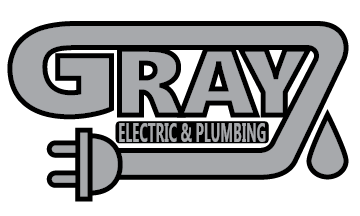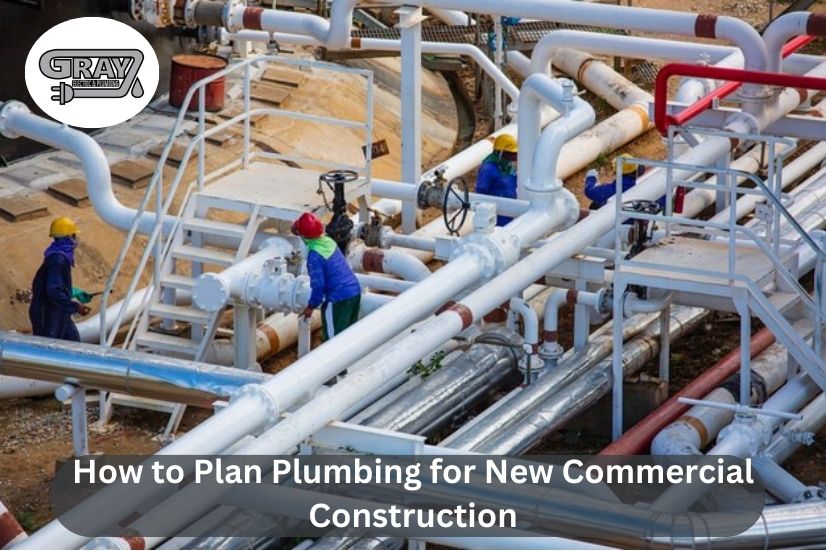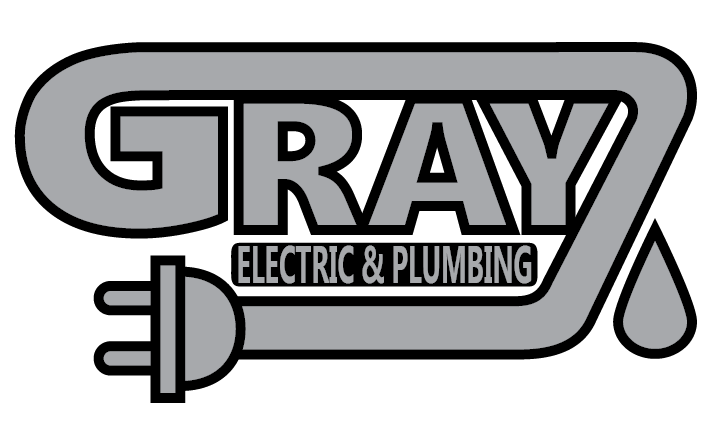Planning plumbing for a new commercial building is a big job. If done right, it ensures smooth water flow, proper drainage, and fewer problems in the future. Whether you’re building an office, restaurant, or store, plumbing is one of the most critical systems to get right. Here’s a simple step-by-step guide to help you plan plumbing for new commercial construction.
Step-by-Step Guide: Plan Plumbing for Commercial Construction
1. Follow Local Building Codes
Every city has plumbing codes. These rules help keep water safe and systems working well. Before starting, check local regulations or hire an expert who knows them.
Ignoring codes can lead to fines, delays, or expensive rework. The best choice is to work with licensed plumbers who understand the laws. Some states also require permits before starting major plumbing work, so ensure you have all the necessary paperwork.
2. Know Your Water Needs
Different buildings need different amounts of water. A restaurant, for example, needs more water and drainage than an office. Hospitals and hotels also have unique plumbing needs.
Key questions to ask:
- How many sinks, toilets, and faucets will be needed?
- Will the building need plumbing for kitchens, bathrooms, or fire sprinklers?
- How will water pressure stay strong in multi-story buildings?
- Will exceptional water filtration or softening systems be required?
Proper planning ensures an efficient plumbing system and avoids unnecessary costs.
3. Design an Efficient Plumbing Layout
A well-planned plumbing system saves money and prevents future issues. Pipes should follow the shortest, most direct route to reduce costs and leaks. A well-thought-out design prevents unnecessary digging, rerouting, or significant construction changes.
Things to consider:
- Keep plumbing fixtures close to water supply lines.
- Reduce sharp pipe bends to prevent clogs and water pressure drops.
- Place drainage lines where gravity can help move wastewater efficiently.
- Make sure restrooms, kitchens, and water-heavy areas are positioned conveniently to reduce piping costs.
An efficient plumbing layout improves water flow, reduces waste, and ensures smooth operation in commercial construction.
4. Choose the Right Pipes
Pipes are made of different materials. Each has benefits and drawbacks, and the right choice depends on budget, building type, and maintenance needs.
- Copper pipes: Strong and long-lasting but expensive.
- PEX pipes: Flexible, easy to install, and budget-friendly.
- PVC pipes: Common for drainage systems but not for hot water.
- Stainless steel pipes: Durable and rust-resistant but costly.
- Cast iron pipes: Often used for large-scale drainage systems due to their durability.
Selecting the best materials ensures a strong and reliable plumbing system for new commercial construction.
5. Plan for Growth and Future Expansions
As businesses grow, plumbing should be ready for expansion. Leaving room for extra pipes, water heaters, or fixtures can save money later.
A well-planned system allows for easy upgrades without significant construction work. If your building might expand, consider adding extra capacity to avoid costly renovations later.
6. Save Energy and Water
Efficient plumbing lowers water bills and helps the environment. Modern technology and better design help save energy and reduce waste. Here’s how:
- Use low-flow toilets and faucets to conserve water.
- Install energy-saving water heaters to reduce electricity use.
- Collect rainwater for irrigation or industrial use.
- Insulate hot water pipes to prevent heat loss and improve efficiency.
- Use motion-sensor faucets to minimize unnecessary water flow.
Water conservation techniques and energy-efficient plumbing solutions benefit both businesses and the environment.
7. Plan for Drainage and Ventilation
Good drainage keeps the building clean and prevents bad smells. Pipes should be adequately sloped, and vent pipes should allow sewer gases to escape.
Common mistakes to avoid:
- Using pipes that are too small for drainage leads to clogs.
- Forgetting vent pipes, which help water flow smoothly and prevent sewer odours.
- Skipping regular maintenance checks can lead to slow drains and leaks.
- Failing to install grease traps in restaurants and food service buildings.
Proper drainage and plumbing ventilation prevent problems and keep commercial buildings running efficiently.
8. Ensure a Strong and Reliable Water Supply
Commercial buildings need a reliable water supply. A strong water system prevents unexpected problems and ensures smooth operations. Important features include:
- Booster pumps: Keep water pressure high in tall buildings.
- Backflow preventers: Stop dirty water from flowing back into clean water.
- Water treatment systems: Ensure safe drinking water if needed.
- Multiple shut-off valves: Allow different building areas to be shut off independently for repairs or emergencies.
A stable water supply ensures the smooth operation of plumbing in commercial construction projects.
9. Plan for Emergencies and Maintenance
Plumbing emergencies can be costly, but planning can reduce risks. Some key steps include:
- Installing emergency shut-off valves in key locations.
- Setting up a regular maintenance schedule to check for leaks and system issues.
- Keeping contact information for emergency plumbing services.
- Training staff on basic plumbing safety, such as turning off the main water supply during a leak.
Preventive maintenance and emergency preparedness protect plumbing systems and reduce downtime in commercial buildings.
10. Test Everything Before Opening
All plumbing must be tested before the building opens. This helps catch leaks, pressure problems, or drainage issues before they become costly repairs. Skipping this step can result in significant disruptions once the building is in use.
Testing includes:
- Checking pipes for leaks under normal and high-pressure conditions.
- Make sure water pressure is stable throughout the building.
- Running water through all systems to ensure smooth operation.
- Inspecting drain lines to confirm wastewater moves correctly.
Thorough plumbing inspections ensure everything is working correctly before finalizing commercial construction.
FAQs About Plumbing for New Commercial Construction
1. Why is following local plumbing codes necessary?
Following local plumbing codes ensures compliance with safety standards, prevents fines, and avoids costly rework. Hiring licensed plumbers familiar with these codes is essential to avoid delays and legal issues.
2. How do I know the right plumbing system for my building?
Assess your building’s needs, such as the number of fixtures and water usage. Commercial spaces like restaurants or hospitals may require more complex plumbing systems than offices or retail stores.
3. What types of pipes are best for commercial plumbing?
Common choices include copper, PEX, PVC, stainless steel, and cast iron. Copper and stainless steel are durable but expensive, while PEX and PVC are budget-friendly and easy to install for most commercial buildings.
4. How can I reduce water and energy usage in plumbing?
Install low-flow fixtures, energy-efficient water heaters, and motion-sensor faucets. Additionally, consider using rainwater collection systems and insulating hot water pipes to save energy and reduce water consumption.
5. Why is plumbing testing necessary before opening a new building?
Testing ensures there are no leaks, pressure issues, or drainage problems. It helps catch potential issues before the building is used, preventing disruptions and costly repairs.
Conclusion
Planning plumbing for new commercial construction takes time and care. You can create a lasting system by following local codes, designing an innovative layout, choosing the right materials, and ensuring proper drainage.
If you plan a new commercial building, ensure your plumbing is done immediately. How to plan plumbing for new commercial construction is a crucial step in ensuring a successful project.
Getting expert advice is key, from commercial plumbing installation to commercial water system maintenance.
Contact us today to learn more!


